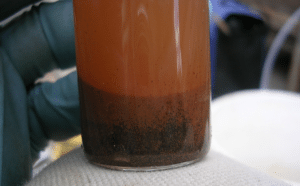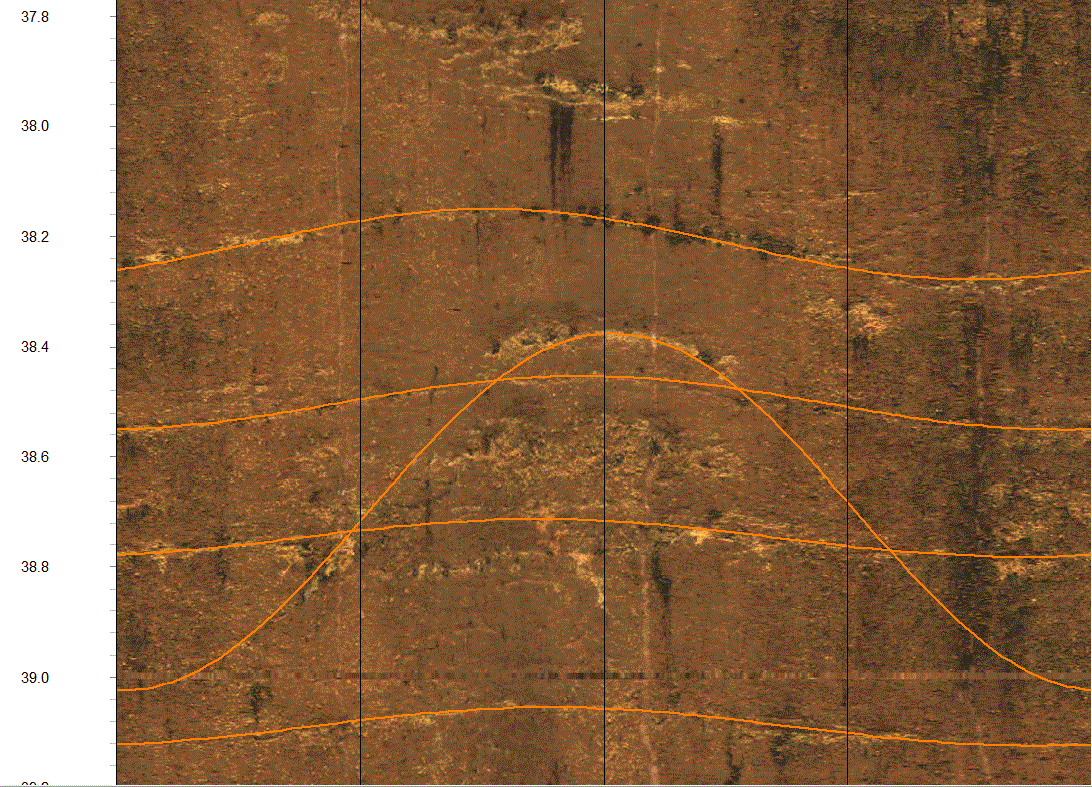UV Fluorescence Core Screening / NAPL Evaluation
Another of Princeton Geoscience’s Decision Support Services is UV Fluorescence Core Screening and Imaging (UV Screening), which Princeton Geoscience has developed for commercial offering to consulting industry clients, who request our support during drilling programs. UV Screening is a technology adapted from petroleum exploration, wherein samples of soil core or rock cuttings are examined under magnification, while illuminated sequentially by white light and ultra-violet light, to identify the presence of any fluorescing non-aqueous phase liquids (NAPL) in the soil or rock pore space. The inspection is done on the undisturbed sub-sample and while dropping a solvent, typically acetone or methanol, as may be needed to liberate NAPL from the soil or rock matrix.
In the method developed by Princeton Geoscience, the magnified images are viewed in real-time on a large-screen computer monitor within the controlled environment of the Princeton Geoscience onsite mobile geological laboratory. Photographic and video files can be saved to document occurrence of NAPL “shows” attributed to depths sampled in the soil or rock cores. Such documentary evidence is being sought more frequently in both pre- and post-remedial studies in situations where consultants seek to identify conditions which may complicate remedy implementation (e.g., NAPL in storage within low-hydraulic conductivity geologic units) and thus support either use of specialized technologies or perhaps pursuit of Technical Impracticability (TI) determinations.

DNAPL in purge water
NAPLs containing petroleum hydrocarbons, specifically polynuclear aromatic hydrocarbons (PAHs), may fluoresce whereas CVOC molecules do not fluoresce under UV light. However, DNAPLs consisting of spent chlorinated solvents derived from metalworking and metal finishing related operations, such as vapor degreasing and cold cleaning, can contain co-solved petroleum constituents which may fluoresce. As such, UV Screening can be used to evaluate both petroleum based LNAPLs as well as DNAPLs derived from certain industrial activities.
